The Written and Intellectual Legacy of the Zapotecs
Before you begin this chapter, we recommend you to read Colonial Documents and Archives. This module aims to introduce the reader to the written and intellectual legacy of the Zapotecs. We invite you to use the keywords you encounter in this chapter to conduct further research about the topics you are going to learn! To acquire more information about the use of Ticha’s digital archive, read the introductory chapter, Ticha.
Resources in this module: Teaching Summary · Answer Key · Spanish Version
1. Introduction
The Zapotecs were the first American society to develop a written tradition that began 2,500 years ago and has been evolving ever since (Romero Frizzi 2003). In Figures 1 and 2, you can observe in Mount Albán, Oaxaca, that prove that the written Zapotec tradition was already present in the first century C.E.
Steles like the ones in Mount Albán and other materials crafted in stone, painted in animal skins, tree trunks, and the walls of pre-Hispanic palaces alongside the manuscripts and printed texts in Zapotec, that began to be produced in the 16th century, are evidence of an indigenous historical, written, literate legacy. Since these registries englobe an advanced society’s worldview, cultural codes, laws, and philosophy, they should not simply be regarded as historical artifacts. Zapotec written documents demonstrate how they continued to write even after the arrival of the Spaniards, but presenting themes and ideas proper of the Zapotecs that lived during the colonial era. Many of these colonial-era manuscripts are archived in various places in the world—not only in Oaxaca—and we have enough understanding of their words, styles, and content to analyze them.
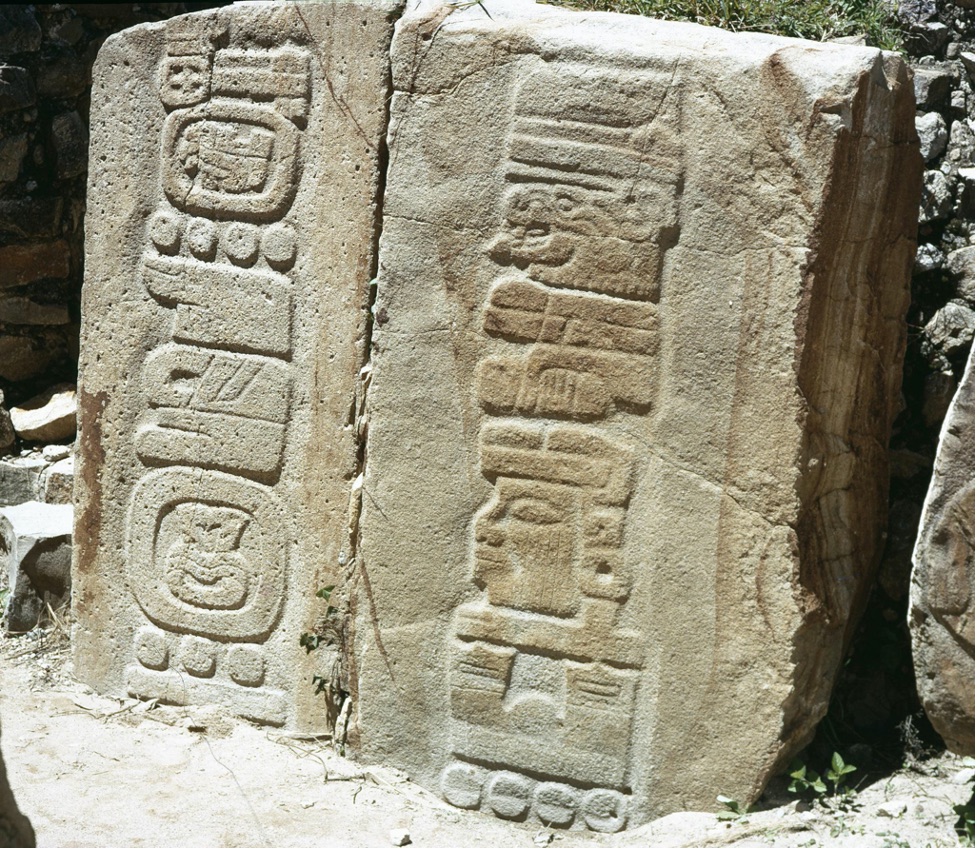

2. Pre-Hispanic education
In Mesoamerica, pre-Hispanic societies (including the Mayas, Olmecs, Mixtecs, Nahuatls, and Zapotecs) were advanced in the domains of philosophy, economy, politics, culture, science, etc. To record their history and knowledge, these indigenous societies developed writing systems. One of these societies was the Zapotecs, who began writing more than 2,500 years ago through images and visual representations of people, animals, and religious figures. These images were used to represent many aspects of everyday life, including speech. Nonetheless, writing was not a privilege accessible to everyone.
Similar to medieval European societies where the nobility had a monopoly over formal schooling, education was a class privilege in Mesoamerican societies, where the nobility controlled it and did not allow members of other classes to access it. This was done for the Zapotec elite to maintain control over the social, cultural, political, and economic institutions and guarantee their ruling. Unlike patriarchal European societies, where only men had access to education, both men and women of the noble classes had the opportunity and the right to receive a formal education, learning to read and write. The Zapotecs utilized writing to reinforce their class privileges and to advance their political and economic agendas, which can be appreciated in the Zapotec temples. Most pre-Hispanic Zapotec temples have walls covered with writing that documented the deeds of the Zapotec elite. Some of the things that can be seen in the temples’ walls are birthdays, marriages, political lineages, wars, and relics of the men and women who made important decisions in the centers of power.
In Figures 3 and 4, you can see the image of a Zapotec tombstone containing information about noble men and women. Figure 3 was taken from a book compiled by Alfonso Caso in 1928 about Zapotec archeological findings. To this day, researchers have only identified 32 tombstones created by the Zapotecs from the years 600 to 900 C.E. Figures 3 and 4 demonstrate a Zapotec wedding, which is carved into a plaque called the Lápida de Matatlán.
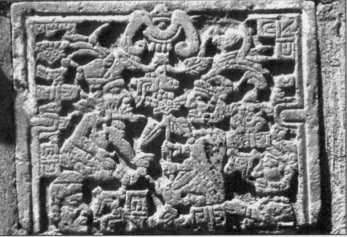

Exercise 2.1
Do you recognize any symbols in the Lápida de Matatlán? Try “reading” it; how is the information organized? Describe the people—what are they doing? Do you see any animals or plants?
In Figure 5, you can see the four characters that are presented in the Lápida de Matatlán (which you observed in Figures 3 and 4), where you can appreciate two types of written representations: drawings of people with their objects and symbols that represent words. Analyze the figures closely.

- Observe the glyphs the Zapotec scribes used to identify the people represented in this tombstone.
- You can see that three of four people represented have a virgule, which denotes speech in Zapotec writing. An embellished virgule means that the person who is speaking does so in a florid manner.
- Look at the symbols next to each character, they are grains of maize, which are used to represent numbers.
- There are many other examples of pre-Hispanic Zapotec writing.
The lápida is a very complex visual object that includes both portraits and symbols. Some of the symbols represent written language. Can you find and describe these parts of the lápida?
This combination of illustrated and textual representations can be seen in other societies with literate traditions. For example, in Figure 6 we can see a window of an 12th century French church where the text and the images are intertwined to transmit one message.
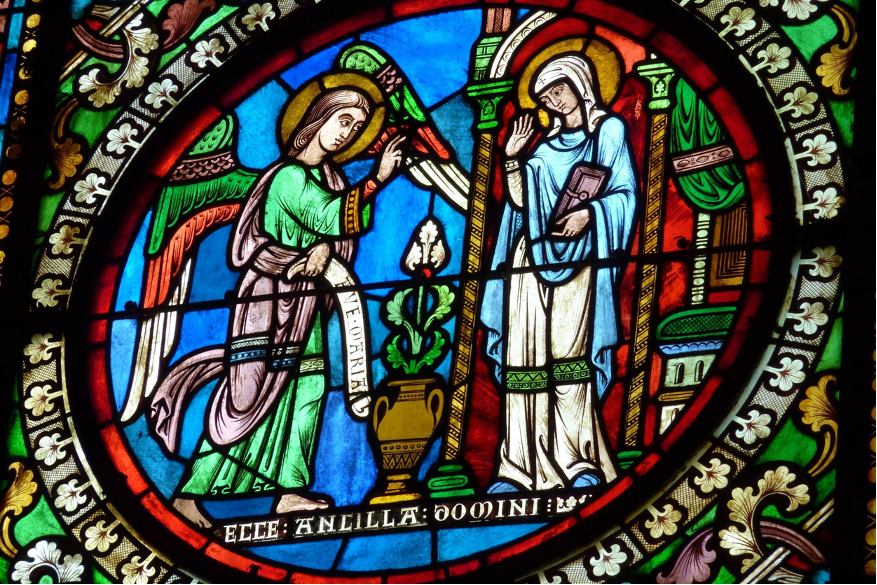
Researchers such as epigraphists (the people who study and interpret various forms of inscriptions) have helped us learn how to read Zapotec (drawings that represent ideas) and (symbols that represent words) that denominate dates, names, and other words. Their studies reveal that the Zapotec writing system was more complex than simple drawings or traces. It was a system that represented phonetic and ideographic elements (Urcid 2011).
Exercise 2.3
Use a browser on your mobile device to search for other images of Zapotec lápidas or Zapotec stelae. Look first for images of lápidas, then Zapotec stelae. If possible, compare what you find with a partner’s results. Record the similarities and differences of the images.

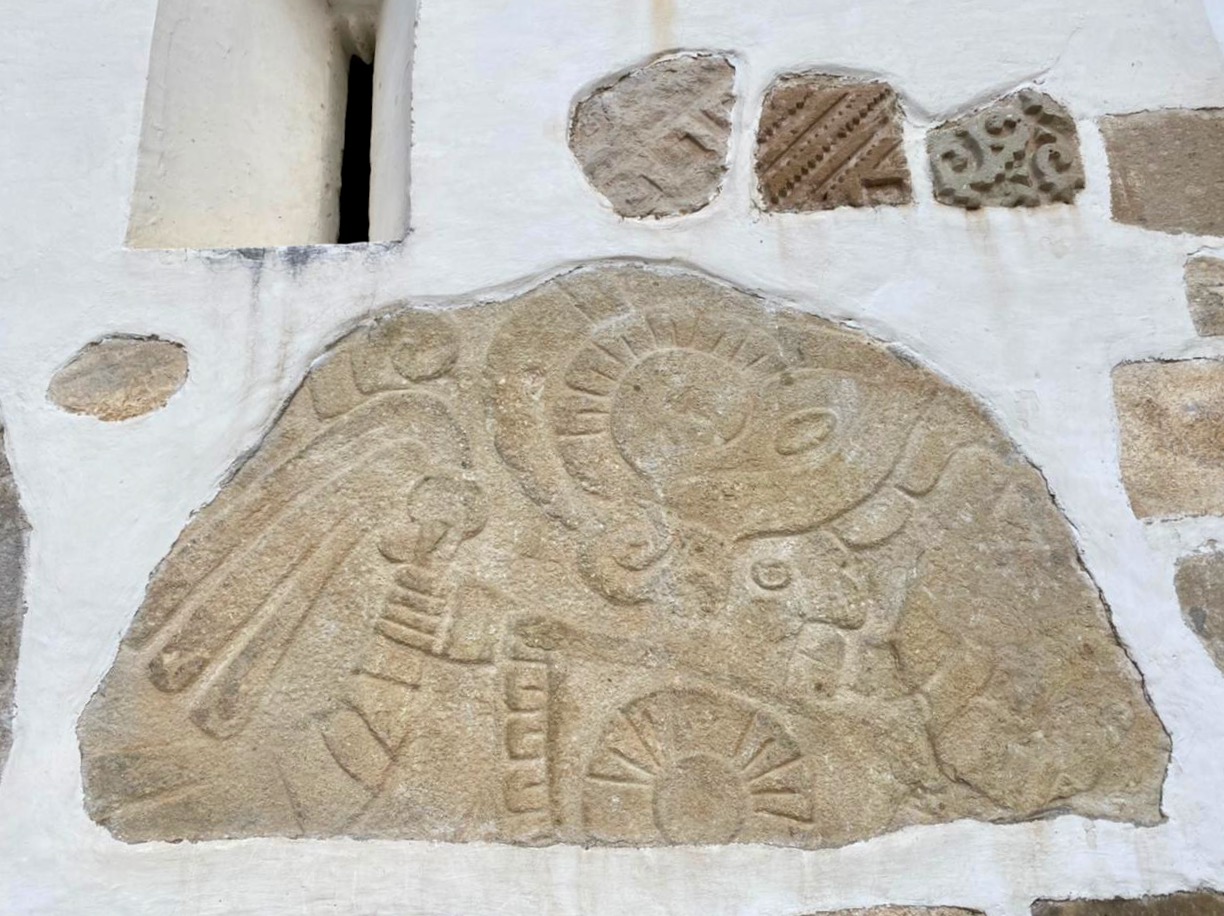

3. Transformations during the colonial era
Upon the arrival of the Europeans in Oaxaca in 1521, the Zapotecs already had a 2000-year-old written tradition. This was immediately perceived by the Spaniards, who brought Nahuatl scribes who had learned the European written tradition with them. [1] The Spaniards knew that mastering local languages and imposing Spanish as the official language was critical to assert their domination, as they had previously done in the Reconquista, which was fought from 711 to 1492. Arriving in Oaxaca, they were confronted by the complexity of Zapotec languages and tried to record them through dictionaries, arts, and religious codices that had the goal of converting the Zapotecs to Christianity. In the prologue of his Grammar of the Castilian Language, which was published in 1492 (the same year when the Catholic Kings Fernando and Isabel declared a unified, Christian Spain and when Christopher Colombus arrived at the Caribbean) Antonio de Nebrija wrote that “language was always the companion of empire.”
Exercise 3.1
Discuss the significance of this quote: “siempre la lengua fue compañero del imperio” (“language was always the companion of empire”). This quote appears in Antonio de Nebrija’s grammar from 1492. To see the digital version, click on this link. (The quote can be found on page 5, line 12).
During the process of colonization, one of the first changes was that the Zapotec scribes adopted the alphabet introduced by the Spanish friars and their Nahuatl collaborators. In New Spain—the name the Spaniards gave to what today is Mexico—the friars established their patriarchal European tradition, only allowing men to receive formal schooling. There is enough evidence that proves that before the arrival of the Europeans, in Mesoamerican societies, women had the right to govern and receive an education. Nonetheless, after 1521, Indigenous women lost most of the rights they enjoyed before the invasion of the Spaniards. After the Spanish colonized them, Zapotecs continued their written tradition but adopting elements of the Latin alphabet; unfortunately, only men had access to this changed written tradition.

Despite its many transformations, Zapotec society maintained its written culture and conserved its intellectual knowledge the way other Mesoamerican societies did. They established their autonomy by adapting the Latin alphabet to codify their language and register their presence in tribunals. The colonial-era documents reveal various aspects of Zapotec society such as their fights for communal lands and their wishes as a society and individuals. In Figure 11, you can see a Zapotec document written in 1672 in an unidentified community. This document was entered in the court’s registry until 1734, thus demonstrating that Zapotecs produced legal documents with internal community purposes.
The first Zapotec scribes who learned and mastered the Latin alphabet were members of the high social classes and the nobility who already dominated the craft of the manuscript with paper, ink, and brush. They taught other members of the same class to read and write, who produced manuscripts known as paleography. Zapotec scribes of the sixteenth to the eighteenth century divulged the use of quills, red ink, and black ink to trace medieval sketches for the Hispanophone Indigenous community members who worked as functionaries of the newly established colonial government called a cabildo. Although most of the documents written by the Zapotec scribes were by, for, and from their cabildo, these were legal documents that functioned to protect the property of the Zapotecs from Spanish domination. They also had other different purposes and, in some cases, secrets.

Zapotec scribes had the objective to conserve their ancestor’s knowledge, in response to the changes implemented by colonial institutions such as the Catholic Church. Evidence suggests that this was not done overtly but behind the backs of the Spanish friars. There is also evidence of manuscripts of sacred texts produced by Zapotec scribes, which were sheltered by exclusive members of the Indigenous community. Other of the documents found demonstrate how Zapotecs continued their pre-Hispanic practices during the colonial era, as shown in Figures 13 and 14. In the will of Sebastiana de Mendoza, we can see that she—an Indigenous woman—was the owner of various lands and objects imported from Europe. She made economic and social decisions that affected various family and community members. This will reflects the usage of important objects that have been respected since pre-Hispanic times, as well as the continuity of the Zapotec code of conduct called guelaguetza. Despite the colonial transformations, the Zapotecs continued writing in their own languages and producing historical documents that can still be read and appreciated.

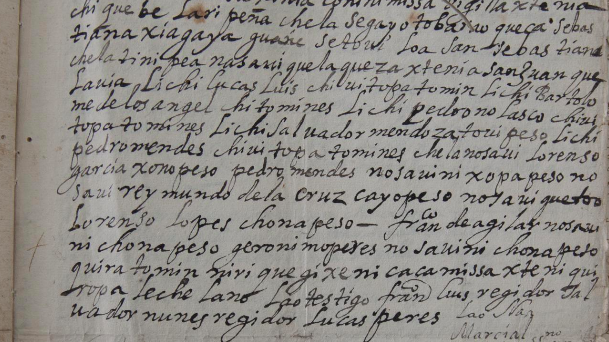
Due to the passage of time and intercultural exchange, writing and language go through processes of adaptation and transformation. As we can see in the manuscripts available in Ticha’s digital database, the scribes had different ways of writing letters and numbers. Sometimes, they wrote using abbreviations for words they used frequently, which changed through time. Therefore, it is necessary to learn and practice paleography to be able to properly decipher colonial texts.
The written legacy of the Zapotecs contains 2,500 years of ideas, sciences, cultural practices, social relations, and economic exchanges. Due to the documents the Zapotecs wrote during the colonial era, we have a gamut of documents that evidence the way they adopted and adapted European influences. Yesterday’s Zapotecs had a firm conviction of leaving a legacy, a voice, a testimony to be seen in the posteriority. Today’s Zapotecs listen once again to the voices of our ancestors in a new context and with the possibilities of technology, are able to take control of our future.
4. Conclusion
In this chapter, you studied the different skills used to evidence the trajectory of 2,500 years of Zapotec texts—from pre-Hispanic times to colonial times—in Oaxaca. You were able to see that Zapotecs of 2,500 years ago wrote using symbols and detailed representations. You observed that colonial-era Zapotecs adapted their writing system to the Latin alphabet with the arrival of the Spanish friars. You studied in depth the way they stored their cultural, mathematical, scientific, religious, and social knowledge from pre-Hispanic times until the colony. With these materials, we can appreciate the written and intellectual continuity and legacy of the Zapotecs.
References
Caso, Alfonso. 1928. Las estelas Zapotecas. México: Talleres Gráficos de la Nación.
Cordova, Fray Juan de. 1578. Vocabvlario en lengva capoteca. México: Pedro Charte y Antonio Ricardo. [Reproducción facsimilar, Ediciones Toledo (INAH), 1987.]
Nebrija, Antonio de. 1492. Gramática castellana. Salamanca, Spain: Juan Porras.
Urcid, Javier. 2008. La lápida grabada de Santiago Matatlán. Una mirada al lenguaje visual de los antiguos registros genealógicos zapotecas (600-900 después de Cristo). In Pictografía y escritura alfabética en Oaxaca, ed. by Sebastián van Doesburg, 23–51. Oaxaca, México: Fondo Editorial del Instituto Estatal de Educación Pública de Oaxaca.
Romero Frizzi, Maria de los Ángeles. 2003. Escritura Zapoteca: 2,500 Años De Historia. Mexico: CIESAS.
- In previous centuries, the Mexica-Tenochca empire, which used to speak Nahuatl, colonized the majority of Oaxaca. Nowadays, many of the pueblos in Oaxaca have Nahuatl names, for example Macuilxochitl (Nahuatl: macuil 'five' + xochitl 'flower'), Mitla (Nahuatl: mictlan 'place of the dead'), Teotitlán (Náhuatl: teotl 'god' + tlan 'place'), just to name a few. These pueblos also have names in Zapotec. ↵
A stele (or stela) is a tall slab of wood or stone used as a marker or monument, for example to mark a grave or commemorate an event.
A pictograph is a drawing that has a conventionalized meaning. For example, a road sign with an image of a deer running can communicate, without words, that deer are common in the area (so you should slow down and watch the road carefully). Emojis are another example of pictographs! Linguists distinguish between symbols that represent an object or idea (pictographs), symbols which represent a specific word or part of a word (logographs), and symbols which represent a sound (phonetic symbols).
There are many ways to write language! English and Spanish are written with a phonetic writing system, where each letter represents a sound. In a logographic writing system on the other hand, each symbol represents a meaning (a word or a part of a word). A common example of logographic writing is the Chinese writing system (hanzi). Pre-colonial Zapotec writing used a system with some logographs (representing words) and some phonetic symbols (representing sounds).